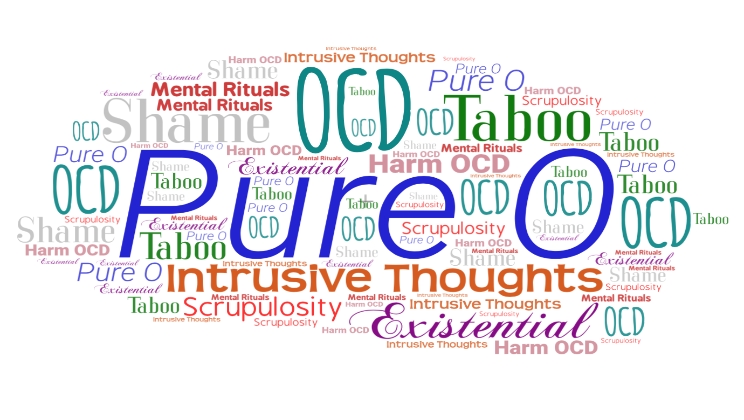
“Pure O”: What is it? Is it real? Is it a diagnosis? What does it mean? Should we stop using the term? Why are there quotes around the term?
The phrases “Pure O” or “purely obsessional” OCD have been used interchangeably over the last 10-15 years in prominent OCD books, in the scientific literature (see Williams et al, 2011), online, in social media among those with lived experience, and among those with OCD who are providers and advocates who themselves have suffered with “Pure O” OCD.
It is not an official clinical term, it is not a formal diagnosis or medical term approved within the professional community. Notable disagreement within the professional community is ongoing whether the term is helpful or hurtful to OCD sufferers, the lay community, and professionals unfamiliar with OCD and its treatment options.
“Pure O” is most commonly understood to consist of non-stop repetitive thoughts (obsessions) that are disturbing and overwhelming about topics that are existential, perverse, taboo, sexualized, or seemingly harm-focused. These intrusive unwanted thoughts inevitably lead to more worries, questions, fear and wondering about the presence of these disturbing thoughts. It’s also important to note that many of these “Pure O” themes can also be triggered by and/or result in physical symptoms that are upsetting and confusing, such as physical pain, sexual arousal or physical changes in one’s genitals (often called ‘groinals’), oversensitivity to breathing or heartbeat functions, etc. With all this obsessing, worrying, questioning, monitoring of physical changes, reviewing past actions, wondering about what’s ahead, the common assumption is that, collectively, everything that is going on in the mind is obsessional. This is one explanation for the term “Pure O.” This, however, is likely not true, even if it all feels obsessional. There are almost always compulsions associated with obsessions, but many are truly not observable because they are of the mind. It is these symptoms, or actions of the mind, that are in response to the core fear, or original obsession, that are the most confusing and misdiagnosed. These are called mental rituals.
So, how does “Pure O” differ from the rest of the OCD themes that are more commonly known and more concretely presented in movies, TV shows, and online, like perfectionism, or contamination/germ concerns, or someone who locks/unlocks excessively?
To start, we must briefly go back to Psych 101 class to remember what OCD is all about.
Diagnostic criteria. In the most recent Diagnostic Statistical Manual version 5 (DSM-V, 2013), OCD symptoms are clearly broken into two categories: obsessions and compulsions. The DSM-V is also very clear that to be diagnosed with OCD, you must have either obsessions and/or compulsions (emphasis on the “AND/OR”), meaning that as long as you have one or the other, you can be diagnosed with OCD. Obsessions are defined as recurring thoughts, urges, or impulses that are experienced as intrusive or unwanted and that caused some kind of anxiety or distress. For the person who has obsessions to be diagnosed with OCD, there must be an attempt to ignore, neutralize, or shut down obsessions by some kind of action. The DSM is clear that this action (aka, compulsion) can be a behavior OR a thought (the latter is called a mental ritual).
As we keep reading in the DSM-V, behavioral compulsions commonly include checking door locks or appliances, washing and cleaning your body or surfaces, repeating actions like rereading/rewriting, repeating in multiples that “feel just right,” various body movements with specific intent to neutralize obsessions, etc. Less observable, lesser known mental rituals include excessive or unnecessary praying, mental counting, mental reviewing of events, undoing or cancelling out thoughts with replacement thoughts, mentally monitoring unwanted or concerning bodily reactions. There are of course many more academic details to all of these criteria that I’m intentionally skipping in the DSM-V, but that is not the purpose here. What is most noteworthy is the clear acknowledgment in the DSM-V of not just overt, visible, behavioral actions but the presence of invisible mental actions called mental rituals. It is these “actions” that the “Pure O sufferer” is commonly using to stop, prevent or eliminate those nasty, hurtful, terrifying unwanted obsessions.
Treatment of “Pure O” OCD. Briefly, psychotherapy treatment for OCD, called Exposure and Response Prevention, aims to a) reduce (or eliminate) all rituals, and b) stay with, accept and embrace obsessions and the uncertainties around them (often done through exposure therapy or acceptance-based treatment techniques), and then c) take actions aligned with his/her values that are purposeful and joyful. The science is clear, there is a circular relationship between the triggering of an O-C episode, the presence of an unwanted obsession, the short-term “effectiveness” of rituals to neutralize or reduce the obsession, the belief that ritual “saved the day,” and then the cycle starts all over, and over, and over. Whether behavioral or mental, all rituals are the target of OCD treatment. Therefore, “Pure O” is treated no differently than other OCD subtypes, though more attention must be paid to assessing and treating mental rituals, or the disease cycle can’t be broken.
So here we are, thoughts. Unintentional, anxiety ridden thoughts (obsessions) vs Intentional, anxiety fighting thoughts (mental rituals). And this is where “Pure O” rears its ugly head and where all the controversy and confusion lies.
As depicted in TV shows and movies, in memes and on social media, whether someone is sadly making fun of OCD or simply using the term OCD to improperly describe themselves with “finicky or quirky” tendencies (which is NOT what OCD is about), most lay depictions of OCD highlight compulsions/rituals that are visible actions (like hand washing). In contrast, “Pure O” is rarely, if ever, except in documentaries, personal accounts, or in professional videos hoping to shed light on the mystery and confusion surrounding “Pure O.”
“Pure O” can understandably be confusing, scary, and destructive to the sufferer and their loved ones. However, once there is more clarity and acceptance of the presence of mental rituals, how to identify them, and how to address them, recovery can takeoff! Once there is acceptance that mental rituals are intentional and controllable (as scary as this might be), recovery can takeoff! Once there is acceptance that mental rituals do not fix OCD, recovery can take off!
The function of mental rituals, the purpose of them, and why they are showing up is no different than any visible behavioral compulsion, but they must be identified and treated. This is key and cannot be overstated. Yet, understanding the difference between obsessions (unwanted recurring “stuff”) and mental rituals remains a major challenge for so many.
So what do we do with the term “Pure O” OCD if there is no such thing as OCD with only obsessions? Does it convey the wrong message by suggesting that all cognitive angst is obsessional? Probably. Does it subtly or directly suggest there are no compulsions (which I’m suggesting is not the case)? Kind of. Will it ever becomes a more formal recognized sub-theme of OCD? Unlikely. Then, why keep using the term?
Here is why: it can save lives! This is not my line but one shared by some of my friends, colleagues, and patients for whom learning about the concept saved their lives (so I now proudly use the term). How, by finding it online and then finding a credible OCD specialist. How else? By helping them feel more understood, instilling hope, and encouraging “Pure O” sufferers to not give up, leading to them willing to commit to effective treatment for their OCD. Learning about the concept gets many OCD sufferers one step closer to recovery. Simply googling the embarrassing, perverse, or taboo with or without using “Pure O” will hopefully lead the truth-seeker to genuine professionals and advocates who know enough about the topic to provide proper referrals and education, such as the International OCD Foundation, nationally recognized OCD advocates who talk about Pure O, or a team like mine at Anxiety Specialists of Atlanta. This will undeniably get someone one step closer to taking back their life.
My academic training discourages me from being open to the term “Pure O,” but exposure therapists like myself already break many of the strict conventions of traditional talk therapy in pursuit of best practices by literally and figuratively meeting our patients where they are (including treatment outside the office). We do so without compromising our dedication to the science or our ethical responsibilities. Recognizing and using the term “Pure O” publicly, or on a website like ours, should be paired with thoughtful psychoeducation about everything I have shared above, with an emphasis of effective treatment, the distinction between obsessions and mental rituals, and an acknowledgment of the shame, embarrassment, guilt and disgust often associated with the themes. All of this can reduce stigma, validate someone’s experience, and give them more hope. Aren’s these each part of our professional agendas? This is why I am very comfortable talking about this challenging topic, this is why I have built an awesome clinical team who shares a common mission, and this is why many of my colleagues acknowledge the term (even if with reluctance). This is also why education is a major part of the first phase of OCD treatment.
Maybe, just maybe, my professional opinions and observations here will increase the education surrounding OCD, its many known themes, and the misinformation surrounding it. Maybe, just maybe, what I shared will support the notion that no matter what the content is within your OCD, OCD is OCD, and rituals are rituals, and there are very clear, proven methods of treatment. Dedication to science, commitment to compassionate care, and willingness to meet the person where they are is a recipe for effective treatment I can always support, and I don’t believe using the term “Pure O” undermines this one bit. In fact, it reinforces it (so says the behaviorist in me).
Face your fears. Live with uncertainty. Take control of your life.
Dr. Josh Spitalnick
Licensed Psychologist, Board Certified in Behavioral and Cognitive Therapy
Clinical Director, Anxiety Specialists of Atlanta
Dr. Spitalnick specializes in the assessment and treatment of anxiety disorders and OCD in children, adolescents, and adults
(If you want to learn more about Intrusive thoughts or Pure O OCD, we have more information and resources on our website, click here)

